| Author |
 Topic Topic  |
|
|
|
ACGODFREY
Silver Member
  
United Kingdom
440 Posts |
 Posted - 22 Feb 2007 : 3:02:18 PM Posted - 22 Feb 2007 : 3:02:18 PM




|
Does anyone use one? I don't use a noseband on my boy as he had a tooth and some of his upper jaw extracted a few yrs ago so there is an indentation where a cavesson would sit. Although he is fine to hack he is very evasive to school and opens his mouth wide and tries to get his tongue over the bit! My instructor has suggested that we try a drop. I school in either a full cheek french link or loose rink french link. Am I correct in thinking that I can't use a full cheek with a drop? I used to ride a pony in one when I was a child but have not seen anyone with a drop for years. All I ever see are flash nosebands.
Thanks
Anne
|
|
Report to moderator
|
|
|
Zan
Platinum Member
    
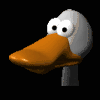
Scotland
3213 Posts |
 Posted - 22 Feb 2007 : 7:00:30 PM Posted - 22 Feb 2007 : 7:00:30 PM





|
I wouldn't use a drop on an Arab at all---because of the shape of their muzzle it would put too much pressure on the nasal passages. TBH don't like drops on any horse.
I would experiment with different bits . On one occassion with a rescued horse who had developed a long standing habit of putting her tongue over the bit I used a grackle nose band for a while---it holds the mouth shut in a kinder fashion without areas of pressure.Once she'd got the idea I dispensed with it. But that was a last resort with a long standing habit---you would be better to try to get him to accept a bit without forcing his mouth shut. |
 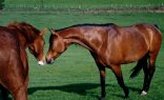 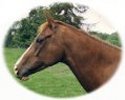  |
Report to Moderator  |
|
|
katherineepea
Gold Member
   
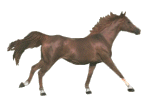
England
883 Posts |
 Posted - 22 Feb 2007 : 8:43:49 PM Posted - 22 Feb 2007 : 8:43:49 PM




|
| drop nosebands are still used- i rode a horse today who wore one. not an arab tho. i have heard that arabs shouldnt wear them or flash nosebands but mine wears a flash sometimes |
Report to Moderator  |
|
|
ACGODFREY
Silver Member
  
United Kingdom
440 Posts |
 Posted - 22 Feb 2007 : 9:27:27 PM Posted - 22 Feb 2007 : 9:27:27 PM




|
| Thanks for suggestions. I tried a grackle on him and he was not happy, at all, to the extent that I removed it after 25mins although my instructor told me it wasn't done up tight enough to have much of an effect, but I hate to see nosebands done really tight. He is very fussy in the mouth and doesn't seem happy to accept any kind of bit without some objection. Believe me, i have tried so many...thanks goodness for bit trials. He seems to be most comfortable in a NS pony lozenge pelham or the NS pony universal gag and is lovely and light in the hand. Problem is that we'd like to do some basic dressage and these are not dressage legal. The moment a plain snaffle goes in, it all goes haywire! Perhaps i will forget the idea of the drop. |
Report to Moderator  |
|
|
suneanarab
Platinum Member
    
United Kingdom
1818 Posts |
 Posted - 28 Feb 2007 : 10:54:22 AM Posted - 28 Feb 2007 : 10:54:22 AM




|
i would never put a drop nose band on anything. but especially not an arab.
you can try some of the other ns baucher bits with lozenge's in them as they are dressage legal. |
suzanne walsh
  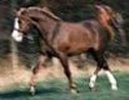 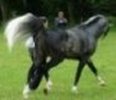  |
Report to Moderator  |
|
|
Cassie
Gold Member
   

England
781 Posts |
 Posted - 03 Apr 2007 : 12:39:53 AM Posted - 03 Apr 2007 : 12:39:53 AM





|
Hi Anne
My mare does the same as your boy, she hates any kind of snaffle she wasn't too bad in a happy mouth pelham but she chewed so much it unusable now, doesn't like nosebands I have tried them all without success.
Then one day I tried a Combination Mikmer now they look horendous, but she loves it I don't get any problems what so ever now, she is soft works through from behind she doesn't jank the reins out of my hands mouth is wet and shut. I wish I had tried this before, they do other types of bits they are made from the same metal that space ships are made from which make them light. You can purchase video tape from the company to help you decide before you buy the bits.
I know some people don't approve of them but its like everything else its how good your hands are even a simple snaffle and do harm in the wrong hands.
I just know this bit works for my mare, and I don't use any noseband what so ever.
Christine |
      |
Edited by - Cassie on 03 Apr 2007 01:58:43 AM |
Report to Moderator  |
|
|
Tahir
Platinum Member
    

United Kingdom
4572 Posts |
 Posted - 03 Apr 2007 : 01:55:00 AM Posted - 03 Apr 2007 : 01:55:00 AM




|
Don't do the drop noseband, Arabs hate to be restricted in any way, shape or form.
As for the bit - I really haven't got a clue LOL!!! Each and every Arab is different, some prefer thin bits, some prefer thick - so it is a matter of trial and error (sorry to be doom and gloom).
My stallion preferred a thick but lightweight eggbutt snaffle, he would do any dressage movement in that bit, and was always very light and responsive to the hand, under any circumstances.
My mare is currently in a happy mouth lozenge bit, but she is fighting every step of the way even when there is no contact. I am certain she would be more responsive in a hackamore (or even a headcollar). I know this would be absolutely useless for dressage, but we are gaining progress with this bit because it is so mild.
But please don't try and clamp his mouths shut, Arabs hate it, and it shows.
Hope this helps.
Carla, xx. |
Report to Moderator  |
|
|
arabic
Platinum Member
    

England
4562 Posts |
 Posted - 03 Apr 2007 : 11:39:17 AM Posted - 03 Apr 2007 : 11:39:17 AM




|
| I dont use any noseband at all. Took me ages to find anything that Freddie was remotely happy with in his mouth. Bless him, he would tolerate it tho. Single link snaffles were definately out. Straight happymouth was about the best until I got the Neue Schule Training lozenge filet baucher. He is great in it as long as there is very little contact and like Carla I feel he too would be happier without. Cant wait for my NH lessons to progress so that he can spend more time in his halter. |
Report to Moderator  |
|
|
jaj
Platinum Member
    

United Kingdom
4324 Posts |
 Posted - 03 Apr 2007 : 2:03:27 PM Posted - 03 Apr 2007 : 2:03:27 PM




|
I'm using a Dr Cooks Bitless Bridle now and K just loves it and so do I. Such a nice feeling to know that you aren't hurting them at all and certainly no clamping her mouth shut. When we ride out she can stop and drink, open her mouth, have a good yawn and off we go again  ! !
Jen

sorry not much help re drop nosebands, but I'm not mad on restriction either |
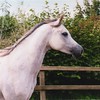     
Kuraishiya (Maleik el Kheil/Kazra el Saghira) and Sahara Bey (Kuraishiya/WSA Charismma) |
Report to Moderator  |
|
|
ACGODFREY
Silver Member
  
United Kingdom
440 Posts |
 Posted - 05 Apr 2007 : 09:41:04 AM Posted - 05 Apr 2007 : 09:41:04 AM




|
Hi all,
I have been trying my boy in a NS pony tranz lozenge baucher which he seems to quite like. Still chomping away at it, but he will put in nice work once relaxed. At least it is dressage friendly. He just seems to hate a snaffle.
Still no noseband which is how I prefer it (and him too!)
Anne |
Report to Moderator  |
|
|
Grey Girl
Platinum Member
    

England
1554 Posts |
 Posted - 06 Apr 2007 : 6:42:58 PM Posted - 06 Apr 2007 : 6:42:58 PM




|
My old mare used to put her tongue over the bit all the time but was controllable like that so we just let her get on with it and put up with her tongue flopping around all over the place. I rode her in a low slung bobble bar happy mouth with no noseband and she adored it. When I did dressage I put a loose cavesson on.
Grey Girl
PS there was nothing wrong with her teeth or tongue etc: regularly checked: she just preferred to have the bit under her tongue. Strange horse. |
 Said the little eohippus, "I´m going to be a HORSE" Said the little eohippus, "I´m going to be a HORSE"  |
Report to Moderator  |
|
|
Tahir
Platinum Member
    

United Kingdom
4572 Posts |
 Posted - 06 Apr 2007 : 9:24:54 PM Posted - 06 Apr 2007 : 9:24:54 PM




|
Just for interest's sake, and totally hijacking the thread (sorry Anne), my mare had a photo session today. She is completely responsive in a headcollar, has been fighting the happy mouth lozenge bit when ridden, but has recently decided to accept it!!! We put a straight bar showing bit on her today with a showing bridle for the photos, she looked amazing, BUT was like a tank and would have been happy to tow me into the next county, when we put the headcollar back on, she was once again, responsive - food for thought!!!
Carla, xx. |
Report to Moderator  |
|
|
sazzlepants71
Platinum Member
    

United Kingdom
3536 Posts |
 Posted - 06 Apr 2007 : 11:41:42 PM Posted - 06 Apr 2007 : 11:41:42 PM




|
just a question, what are you doing differently in the school?if he is fine and non evasive when you hack out is it because you are trying to hard in the school?
sometimes ( dependent on what you want to do ) a pelham is good for work @ hme , its weird i have ridden my boys in pelhams first and then snaffles at home they seem to be more relaxed in them that way round.
theres a lot to be said about 'hands' and riding and instructors!
thought you might find this interesting reading below
not for everyone but has worked for me .x
Library
Use of the Pelham
I believe that the mouth is the key to the rest of the horse. Uneducated hands will cause resistance in the mouth, which will set off a whole chain reaction of further resistance throughout the rest of the body. When I was a child, the highest accolade that you could receive as a rider was that you had “Good hands”. It is a long time since I have heard that saying, because it seems to have passed into the archives of equitation, it being much more important now to get your horse “into an outline”, regardless of how.
I had always been taught that I must “make a fist around the reins”, closing my fingers firmly, so that I could maintain a “steady contact”. When I first went to Belgian Classical teacher, Capt. Desi Lorent for help, my “typical plebeian British hands” horrified him. I had been taught that to get the horse “On the bit”, I should saw my hands from side to side to make him drop his head. I knew instinctively that this did not feel right, but it seemed to be the accepted way of getting the horse into the ubiquitous “outline”. Having successfully winched the head down into place, you then had to hold it there with an advised “ten kilos” of pressure in each hand. At first Desi did not seem to realise that I had not been taught any other way, and despite being barracked on a daily basis for my overuse of the hand, the penny did not drop until in exasperation, one day he took me aside and said “Has nobody ever told you that you use your fingers, not your hands, to “ask” the horse to relax his lower jaw? You hold the reins firmly with your thumb and first finger, and then you are free to close them in restraint, to vibrate the reins to ask, or to open the fingers to “give” in reward “. Nobody had ever told me such a thing.
I experimented with different horses over the next few days, and it was as if someone had turned a key in a door for me. I no longer felt it necessary to move my hands around, because by using the fingers, there was no need. For the first time ever, subtlety of the rein aids came within my reach, and it was all so simple!
Suddenly, I no longer felt compelled to pull back my inside rein to turn or bend the horse. Desi instead, told me to raise the inside hand, and squeeze with the fingers as if lightly squeezing water out of a sponge. In this way, the horse will flex to the inside, just sufficiently to see his inside eye and nostril, not the whole side of his face. Lowering the outside hand, which remained in support at the base of the neck, acts as a barrier, to prevent excessive bend in the neck, which causes problems that we will be discussing in chapter seven which covers turns, circles etc.
With a young horse or a less educated older one, it is quite permissible to use an “open” rein, see photo, so that the hand is taken well out to the inside, but again, never backwards. This action helps to guide the forehand around, and can gradually be lessened, as the horse begins to understand.
I truly believe that the almost fanatical belief in the use of the snaffle bit as the only bit in which to educate the horse, is the prime cause of so many riders having such harsh hands. When I was a child, we rode our ponies in whichever bit they seemed comfortable. Since the emergence of dressage as a sport, those who elect to compete in this discipline have a very limited choice of bits- only ten different types of snaffle, all with basically similar action, and four varieties of bridoons and curbs, the latter, only permitted from Elementary level upwards.
It seems that unless you ride everything (regardless of how much force has to be used) in a snaffle, you are treated with scorn. The snaffle was primarily used in olden days for grooms, whose employers did not consider had sufficiently educated hands to ride in a double bridle. When the horse is correctly ridden in a snaffle from the start, most will go kindly in a snaffle for the rest of their days, going in a double bridle as and when required for competition. Sadly, this is often not the case. Many horses are badly ridden from the start, and because the mouth is so easily damaged, the corners and bars are covered with sensitive nerve endings which are all too readily destroyed by strong use of the hands. Many riders seem to think that the horse needs pounds of pressure in each hand, or backward tugs on the reins, in order to be able to feel the rein aids. This is rather akin to the English habit of shouting at foreigners as if they were deaf, in the hope that they will understand!
Try a little experiment with a friend. Take a pair of reins with a snaffle bit attached, and one of you take hold of the bit . Grasp it quite firmly, as if the horse were himself, “taking a bit of a hold”. The other person holds the reins as would the rider. The “rider” then tells the “horse that he is going to pull back on the reins. The “horse” finds that his reaction is to pull back even harder, and so a tug of war ensues, much as it does on a real horse. Now, instead, the “rider” closes his left fingers tightly on the rein, then slightly releases the tension, by softening the fingers again, alternating with the right hand, so that as the tension increases on one side, it is released on the other. The “horse” will want to yield his hand forward, much as the horse will offer to yield his lower jaw.
As the “horse” yields his hand forwards, the “rider” opens the fingers (still holding the reins firmly with thumb and first fingers but merely slightly uncurling the other three) and “gives”, therefore rewarding the “horse”. It is possible to “give” at least a couple of inches of rein, merely by this slight uncurling of the fingers, and likewise shortening them by closing the fingers again, all without any need to move the hands. The “rider” then experiments by vibrating the reins with his fingers, from a definite squeeze, to a mere flutter of the fingers. The “horse” will feel even the tiniest movement of the reins through the fingers on the end of the rein, even though there is no tension, just the weight of the reins alone. So does the real horse.
It is this variation of tension that creates contact. If the horse pulls against me, then I will close my fingers with equal tension, but never using my hand to pull back. Neither do I close the fingers of both hands at the same time. Again, I will use the alternating left and right squeeze that I mentioned in the experiment above. Instantly the horse yields his jaw, I open my fingers and yield the tension on the reins in reward, but at the same time, close my legs a little more to keep the hindlegs stepping under and the back coming up. If the horse tries to raise his head again the process is repeated, until, often in a very short space of time, the penny drops, and the horse will stay soft and relaxed in his jaw, on a very light contact, freeing the rest of his body from the tension that prevents him working “through”.
The snaffle, it is true, is probably the only bit in which the horse will allow himself to be abused to a certain extent. In a curb bit of any variety, the horse would be very likely to stand up on end to get away from the pressure, if you were to saw on his mouth as so many riders do in a snaffle, but curb bits i.e. Pelhams or Double Bridles, are actually much kinder in educated hands.
The bit is the key to achieving relaxation of the horse’s jaw. Relaxation of the jaw is essential, because if there is stiffness and resistance there, it will set off a whole chain of tension throughout the rest of the horse. If the horse does not respond to light finger pressure in a snaffle, what is the point of having to use force, which does not actually render the jaw relaxed, but makes the rider resort to sawing on the mouth to reel the head in at the front? When the horse relaxes his lower jaw, his head will go down of it’s own accord, freeing the back to round up, and enabling the hindlegs to step further under the body. Many horses do not like the nutcracker action of a jointed snaffle bit. Try placing one over your wrist, and pull back on it. Note how quickly the blood drains from your arm, leaving a white ring. Think how this affects the horse’s tongue and jaw. Ten kilos of pressure in the hands, exerted against the jointed bit in the horse’s mouth, will act like a tourniquet. One famous instructor of the Cadre Noir in France, wrote that he had seen horse’s tongues “turn blue or even violet” as the result of heavy handed riders.
I have worked with countless horses that were supposed to be difficult to school, because they would not work “on the bit”. In nearly every case, I have changed the bit and ridden them in a mullen mouth Pelham, usually made of metal covered in rubber, (not Vulcanite, which is too hard and thick), or Kangaroo metal. Because the bit is mild, with no nutcracker action, and the curb chain acts on the curb groove, which contains a reflex point which, when light pressure is applied, makes the horse relax his lower jaw. It is usually possible within seconds, if not minutes to achieve this, merely by “asking” with the fingers, without any force or sawing on the mouth. His stride will become longer, his back will swing, and above all, he will learn to carry himself. I cannot understand the rationale of the “powers that be”, which mourn the loss of art in dressage, and yet perpetuate it, by enforcing the use of bits that encourage heavy hands. Regardless of the fact that I can often transform a previously wooden and resistant horse in a very short time, into one that is pliant and willing, I have nonetheless been accused of cheating, because I have used a Pelham bit, not the regulation snaffle. People always say that the horse will come behind the bit in a Pelham. This is only true if you use the bit strongly.
The horse will indeed drop behind the bit to avoid the discomfort of strong pressure on the curb groove, but when the fingers are used to achieve nothing more than the relaxation of the lower jaw, the horse will lengthen, not shorten, over his topline. I could cite countless case histories of horses whose way of going I have changed in minutes by changing to a Pelham and riding in this way.
People often ask me why I use a Pelham in favour of a full double bridle. I find that the Pelham is a good everyday bit, and is ideal to introduce a horse to the action of the curb, without having cope with two lots of metal. I prefer to keep the double as the “icing on the cake”, the ultimate aid to refinement, to be used before and during competition .
|
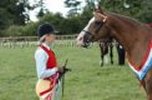  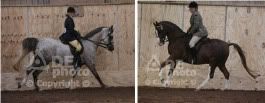 |
Report to Moderator  |
|
|
Cassie
Gold Member
   

England
781 Posts |
 Posted - 07 Apr 2007 : 10:30:13 PM Posted - 07 Apr 2007 : 10:30:13 PM





|
Hi Sizzlepants
I totally agree with you I was taught the same views you have you and that you don't start using a double until the horse goes in a snaffle and if you were to use a pelham you would get remarks like "that horse must be hard to hold". I ride my mare in a pelham has she doesn't like snaffles of any kind. But don't you think there seems to so much conflicting opinions among riding instructors, only the other week I read in a horse magazine that if you hold your thumbs in the air and close the fingers you get a more of a steady contact where as if you have the thumbs on the reins there is no giving. So when a novice reads these articles and different instructors it must be very confusing for them.
Christine |
      |
Report to Moderator  |
|
|
ACGODFREY
Silver Member
  
United Kingdom
440 Posts |
 Posted - 10 Apr 2007 : 1:12:07 PM Posted - 10 Apr 2007 : 1:12:07 PM




|
Hi Sazzlepants,
I have read the article before and thoroughly agree with what is said. I have been told that I have quite good hands and am certainly not one to grab hold, saw and force the horse into an outline. If anything, I have been told that my contact needs to be stronger alot of the time. My boy has a history of mouth problems and I think alot of his fussing is actually learnt and although he now has no problems now he just carries on munching due to habit. Due to his problems we only hacked out for a few years and as he is rather trustworthy I have always hacked with a very light contact (I have been told off for this). I started to school him about a year ago and quite frankly I just think he finds it so dull that he gets a bit annoyed and the munching starts I have recently discovered that he likes to jump and on recent occasions a couple of spectators have observed how much more keen and more forward going he is when we jump as opposed to flatwork. I think he is just bored with schooling! I did think of a pelham as I have been to a Heather Moffat clinic as a spectator and do like her way of riding and she is quite convinced that arabs in particular seem to prefer them to snaffles. But I have never ridden with two reins so decided against it. I have recently discovered that he likes to jump and on recent occasions a couple of spectators have observed how much more keen and more forward going he is when we jump as opposed to flatwork. I think he is just bored with schooling! I did think of a pelham as I have been to a Heather Moffat clinic as a spectator and do like her way of riding and she is quite convinced that arabs in particular seem to prefer them to snaffles. But I have never ridden with two reins so decided against it.
Thanks for all your thoughts on the matter. Now I have a happy jumping horse (and who says arabs can't jump ) i may just forget doing too much flatwork!!! ) i may just forget doing too much flatwork!!! |
Report to Moderator  |
|
| |
 Topic Topic  |
|
|
|

